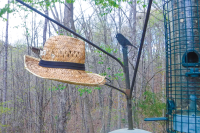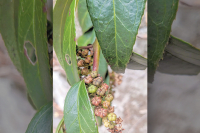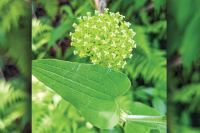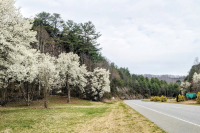Notes from a plant nerd: Invasive Plants Part II: Revenge of the Sterile Cultivar
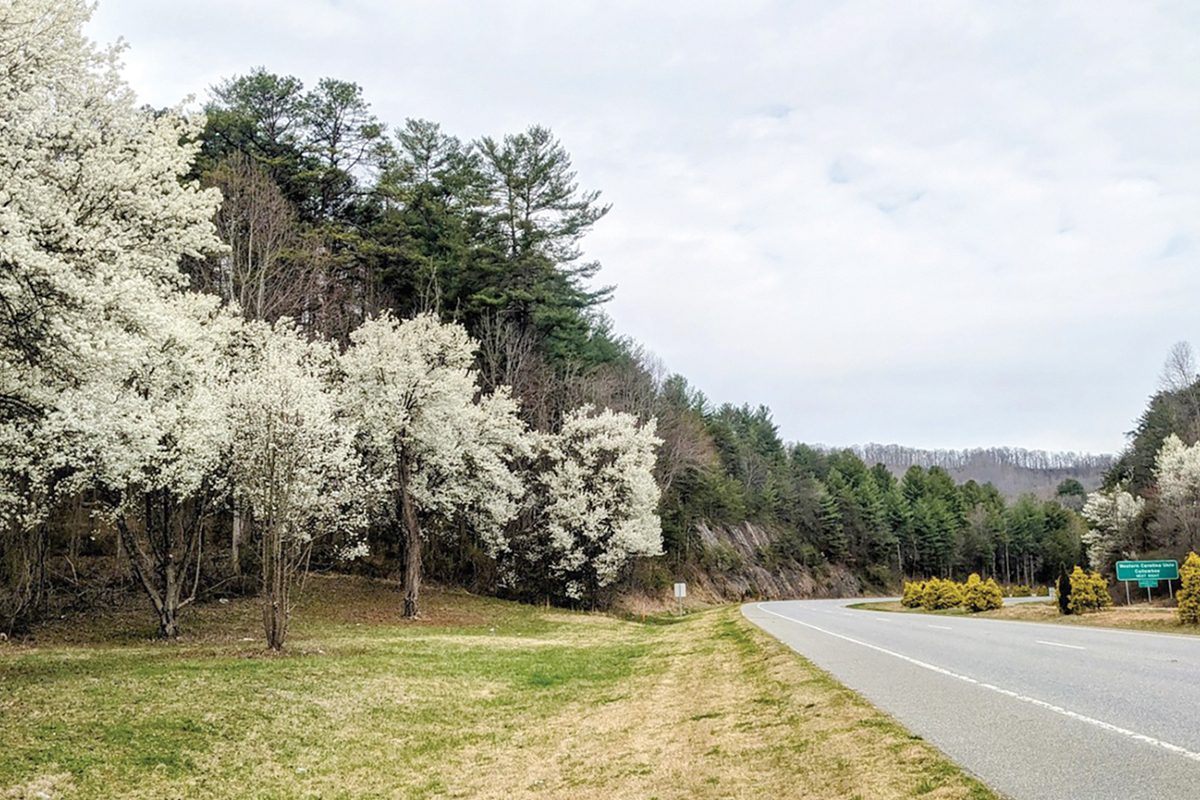 Invasive Bradford Pears are common along roadsides. Adam Bigelow photo
Invasive Bradford Pears are common along roadsides. Adam Bigelow photo
All around Western North Carolina are thousands upon thousands of small to medium trees blooming white, stinky flowers along roadsides, fence lines and driveways.
There are large ones that were planted intentionally before we learned that their branches are weak and often split in storms and under the weight of snow. And then there are all the little offspring these original plantings have borne, baby trees from horticultural varieties that are labeled and sold as sterile cultivars.
Except nature finds her way, and these “Bradford” or “Cleveland Select” pear trees turned out to not be so sterile. The few fruit of the thousands produced by each tree that are capable of germinating into seedlings revert to one of the parent trees that created these hybrids. The callery pear and its cultivars are characterized by numerous early blooming flowers, late changing fall leaf color, and giant thorns along the stems and branches which are capable of puncturing tractor and mower tires.
It turns out that the callery pear is an invasive plant.
In last week’s episode, we learned about the difference between a native plant, an exotic plant and invasive plants and how much of that distinction lies in the coevolutionary history between plants, insects and the web of life. Some characteristics shared by most invasive plants are exhibited in the ‘Bradford” pear, and in other common invasive plants like multiflora rose (Rosa multiflora) and Privet (Ligusticum spp.). These include early leaf emergence and/or early blooming, having multiple flowers per plant, high fruit and seed production and rapid leaf and stem growth.
This time of year is great for identifying and removing many invasive plant species. The bright green arching canes of multiflora rose stand out against the brown of the early spring forest floor. This makes them easy to get to as other plants have yet to emerge. I like to cut the canes about 6 inches high where they all converge into the soil at the crown of the plant. I can them pull by hand, loosen with a digging fork, or gently pull out this top-tier invasive plant, root and all. This last effort is helped by a great tool called the weed wrench. Look it up.
Related Items
One interesting and delicious approach to removing invasive plant species is to use them for their edible and medicinal properties, if there are any. This time of the year, garlic mustard (Allaria petiolata) is beginning to emerge and is easily pulled before its white flowers get pollinated and produce a plethora of seeds that easily leads to an uncontrollable spread. Better to pull them and add them to your salads and stir-fries as they are not only edible, but delicious.
Other delicious invasive plants include kudzu (Pueraria montana), whose leaves, flowers and roots are all edible; knotweed (Reynoutria japonica) shoots are tangy and sweet when sauteed; and autumn olive (Elaeagnus angustifolius) is an invasive tree with sweet, tangy fruits. If you’re going to be killing edible invasive plants, and I encourage you to kill them when you see them, you might as well eat and enjoy them if you can.
Some plants that evolved in different parts of the world and have been introduced into the landscapes and forests around us can have wonderfully beneficially medicinal properties. Plants like the invasive barberry (Berberis thunbergii) and bittersweet (Celastrus orbiculatus) have medicinally active compounds in their roots that can be harvested as they are being removed from the forest, just as long as there were no herbicides used in the process. Sometimes it is the only viable option, but rarely do you need to use synthetic herbicides in your yards to kill invasive plants. Those are best left to the land managers and ecologists working to remove invasive plants from the forest.
I invite you to help heal the world by removing invasive plants and encouraging native plants. This is hard and rewarding work, so I do recommend that you eat your “weedies” to get your strength up. Some plants, like the rose, bite back.





